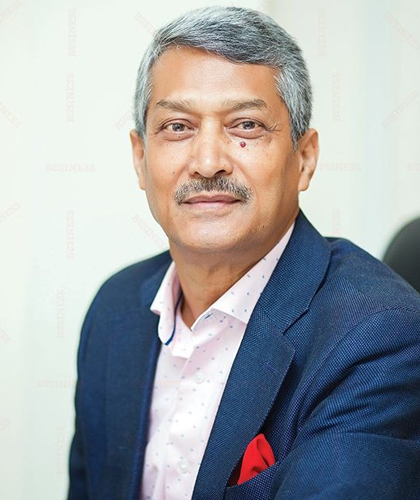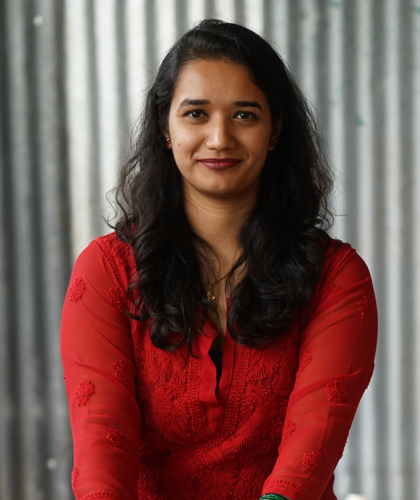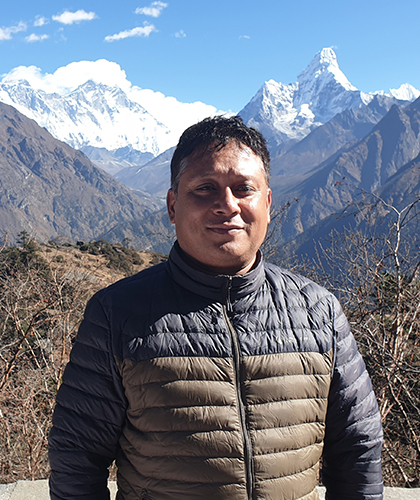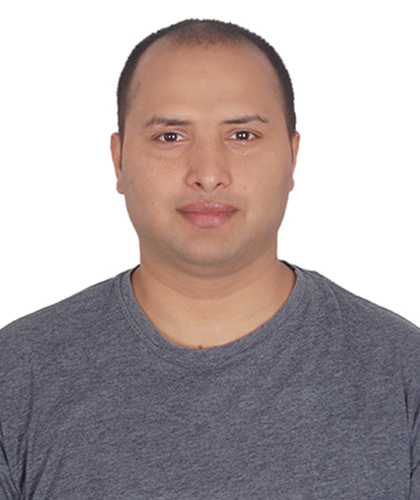Golden Triangle Tour
Trip
Overview
One remarkable monument here is 16th century temples dedicated to the Hindu go Krishna, built entirely of stone.
Trip
Highlights
-
Short but unforgettable trek with the beautiful view of the high mountains, terraced filled hillside, rich flora and fauna and more
-
Discover the lifestyles, culture and traditions of different ethnic groups living in the Himalayan and Terai Region
-
Rafting in the Seti River having rapids of class II
-
Possibility of off road cycling along the foothills of Bandipur and also jungle safari
-
The visit of Nepal’s first National Park, Chitwan National Park
-
Country
Nepal -
Duration
14 Days -
Difficulty Level

-
Accommodation
Overnight at the Hotel -
Guide
English Speaking Nepali Tour Leader
Route
Itinerary
Welcome to Nepal!
On arrival at Tribhuvan International Airport, a representative from our office will greet you at the airport and escort you to your hotel and help you check in. You will then be briefed about your daily activities. You'll have rest of the day at leisure.
Optional - Mountain Flight: One of the must-see landmarks of Nepal is, of course, the highest peak in the world – Mount Everest. An awe-stricken silence comes close to matching the experience of a mountain flight. For one hour, you'll fly over the Eastern Himalayan Ranges of Nepal where some of the highest peaks in the world including Mt. Everest lie for a surreal feeling as you come face to face with the world's tallest and most enigmatic of Mountains. Even those visitors who like the rigors of a trek won't miss the opportunity to "conquer" the mountains in one stunning swoop.
Sightseeing tour of Kathmandu & Patan after breakfast at hotel
Kathmandu City: Kasthamandap, the source of the name Kathmandu means 'made from the timber of a single tree'. Also known as Kantipur, the capital Kathmandu is the hub of Nepal's art and culture. It is a place for rest, relaxation and easy-day sightseeing of historic and artistic temples and monuments. Kathmandu Durbar Square with its arrays of temples, Seto Machhindranath and the ancient palace of the former Nepali Royals enriches your experience of the centuries old civilisation.
Swayambhunath: Said to be around 2000 years old, this Buddhist Stupa sits atop a hill. The main stupa is composed of a solid hemisphere of brick and earth supporting a lofty conical spire crowned by a pinnacle of Copper gilt. Painted on the four sided base of the spire are the all seeing eyes of Lord Buddha. The hill of Swayambhu is a mosaic of small Chaityas and Pagoda temples. You'll get a scenic view of Kathmandu city from there.
Patan City: Located about 5 km south of Kathmandu, Patan is one of 3 royal cities in the valley. A destination for connoisseurs of fine arts, Patan is filled with wood and stone carvings, metal statues, ornate architecture, including dozens of Buddhist and Hindu temples, and over 1200 monuments.
Patan is believed to have been built in the third century B.C. by the Kirat dynasty later expanded and enriched by the Lichhavi and the Malla rulers in the medieval period. Patan Durbar Square, like its counterpart in Kathmandu, is an enchanting mélange of palace buildings, artistic courtyards and graceful pagoda temples. The former Royal palace complex is the centre of Patan's religious and social life, and houses a beautiful museum. One remarkable monument here is 16th century temples dedicated to the Hindu go Krishna, built entirely of stone.
Overnight at the hotel.Breakfast at the hotel.
Drive of 5-6 hours under normal road condition to Pokhara which is approx. 220 kms. southwest of Kathmandu Valley at an altitude of 827m from the sea level. Pokhara is a remarkable place of natural beauty. At an elevation lower than that of Kathmandu, it has much more tropical feel to it; a fact well appreciated by the beautiful diverse flowers that prosper in this environment. The enchanting city with a population of around 95,000 has several beautiful lakes and offers stunning panaromic views of Himalayan peaks. The serenity of the lakes and the magnificence of the Himalayas rising behind them create an ambience of peace and magic.
The valleys surrounding Pokhara is home to thick forest, gushing rivers, emerald lakes and of course, the views of world famous Himalayas. The city is also known as the center of adventure.
Phewa Lake: Spend a quiet time boating in the ultimate lake where the reflections of Mount Annapurna and Machhapuchhre range falls. You will also see a variety of fishes while boating. An island temple is located at the middle of the lake. Thick forest lies on the adjoining southern slopes of the lake. It's hard to escape the draw of Phewa Lake and any visitor with even a few spare minutes should endeavour to take a boat out on the water to fully experience the wonderful views of the reflected mountains.
Overnight at the hotel.Breakfast at the hotel.
An early morning drive to view awesome Sarangkot, which lays 9 kms North West of Pokhara. It is one of the most popular tourist destinations in Nepal. Conveniently perched high on the top of a ridge at 1,592m, the serene hill resort offers a spectacular panorama of the entire Annapurna range stretching from east to west and the un-spoilt rural settlements just below those towering peaks. Viewing 700m down from the top of Sarangkot, you will get splendid sights of the entire stretch of Pokhara Valley, Phewa Lake and many more.
Devi's fall:Locally known as Patale Chhango (Hell's fall), Devi's fall is an amazing waterfall lying about 2 km south-west of Pokhara airport on the highway to Tansen. It was named after Devi, a Swiss lady who was swept away when the floodgates were accidently opened, never to be seen again.
Seti River Gorge: Carved by Seti River, the gorge is one of the natural wonders of Pokhara. Ki Singh Bridge at Bagar, Mahendra Bridge & Prithivi Highway Bridge near Bus Park provides a perfect view of the deep river gorge with turbulent rush of milk like water.
Tibetan Villages: Tibetan Villages, Tashiling in the south and Tashil Palkhel in the north of Pokhara Valley are the two Tibetan villages that are inhabited by the Tibetan people who keep themselves busy by producing and trading woolen carpets and other handicrafts.
Annapurna Museum: Also known as the Natural History Museum, it is located at Prithvi Narayan Campus east of the old bazaar. Managed by the Annapurna Conservation Area Project (ACAP), the museum has an exceptional collection of butterflies, insects, birds, and models of wildlife as well as samples of various precious and semi-precious stones and volcanic rocks.
Overnight at the hotel.Drive towards Chitwan from Pokhara. The journey which heads southeast takes about 4-5 hrs under normal road condition and is approx. 140 kms. The Royal Chitwan National Park is in the lush valley of Chitwan at the foothills of Churia ranges which houses the first National Park of the Kingdom. This National Park is famous for its variety of wildlife, especially the Great One Horned Rhinoceros and the elusive Royal Bengal Tiger.
Lunch at resort.
Elephant ride: How about a ride on an elephant's back in the dense forest witnessing wildlife activities? Don't miss an opportunity to learn a little about these gigantic mammals. A ride on them will allow you to approach some of the world's rarest animals such as rhinos and sloth bears closely. The ride usually lasts an hour or more.
Bird watching: The Chitwan National Park is the realm of more than 450 species of birds. In other words, some people have commented the park as a heaven of the bird world. Take a guided tour through the forest to hear the colourful birds' early morning chirps and watch them fly.
Overnight at the hotel.Look out for a day of safari after breakfast at hotel!
Jungle Drive: Ride on a jeep through the dense forest inside the park, passing all sorts of wildlife and vegetation is a thrill itself. There will be chances of discovering more wildlife as you go along. Jeep safari is not only the fastest way to discover wild activities but is also the safest. And to add up to your wildlife experience, what more can you expect than a visit to the crocodile breeding farm en route.
Nature walk or jungle walks: Jungle Walks allows one to explore several different wildlife habitat areas, from the flood-plain grassland to the dense Sal forests. There, one gets an opportunity to encounter a variety of animals including the endangered ones. Since walking through the forest disturbs the animals less, you'll have a better chance for discovering wildlife. One can also learn useful information about different kinds of plants and herbs in the National park.
Dugout canoe ride: RFloating down Rapti River on a dugout canoe is the best way to discover the habitat of crocodiles in the river (from a safe distance). It is also a relaxing and a better way to watch the different kind of birds and wildlife species drink water on the bank of the serene river. Dinner and overnight at Resort
Overnight at the hotel.Drive back to Kathmandu for 5-6 hrs under normal road condition.
Leisure time in the evening.
After breakfast commence the sightseeing tour of Bhaktapur, Pashupatinath and Boudhanath
Bhaktapur (Bhadgaon): Also known as city of devotees, Bhaktapur is the home of medieval art and architecture. Lying 14 kilometers/9 miles east of Kathmandu City, this place was founded in the 9th Century and is shaped like a conch shell. The city is at the height of 4,600 ft. above sea level. In Bhadgaon, you will visit the Durbar Square with the Palace of 55 windows built by King Bhupatindra Malla. The famous five-storied Nyatapol temple on the terraces of which stands a pair of figures - two goddesses, two strong men, two elephants, two lions and two griffins is the tallest temple in the valley and was also built by King Bhupatindra Malla. It is one of the best examples of Pagoda styled temples.
Pashupatinath Temple:Pashupatinath Temple dating back to 400 A.D. is one of the oldest Hindu Temples dedicated to Lord Shiva. It is for the Hindus what Mecca is for the Muslims. Situated amidst a lush green natural setting on the bank of the sacred Bagmati River, the temple built in Pagoda Style with gilded roof and richly carved silver doors. Pashupatinath is the centre of annual pilgrimage on the day of Shivaratri which falls in the month of February/March. You'll also be able to see cremation grounds that lie on the bank of Bagmati behind the temple.
Boudhanath Stupa: One of the oldest and the biggest Buddhist monuments ever built in Nepal; Boudhanath is one of the holiest structures imposing a height of 36 meters with three massive level Mandala style platforms. It is surrounded by colourful buildings housing families creating a friendly enclosure. The Stupa is visited every year by tens of thousands of pilgrims from all over the world.
Day concludes with dinner at a Nepalese Restaurant with cultural show.
Overnight at Hotel.We ensure that that you will leave Kathmandu with cherishing memory and an experience of a lifetime.
Our representative will drive you to the airport in time for your flight back home. Journey well!
Meet
Our Experts
For Travel Agents

MR. BIJAY AMATYA
-
CEO, Founder
For Travellers

Ms. Neha AMATYA
-
Executive - Business Development

Mr. Deepak Gurau
-
Tour Officer

Mr. Sanjaya Moktan
-
Senior Manager tours

Mr. Saroj Bhatta
-
Tour Officer
Contact us
Base Camp, Basundhara, Kathmandu, Nepal
This email address is being protected from spambots. You need JavaScript enabled to view it.



 +977 1 5909976 / 77 / 78
+977 1 5909976 / 77 / 78